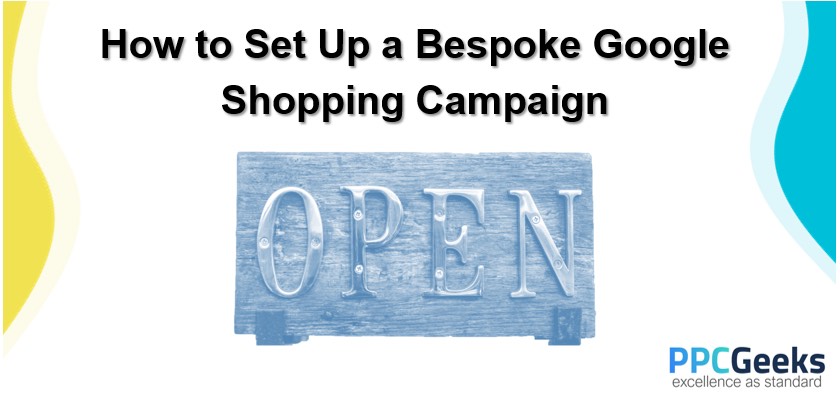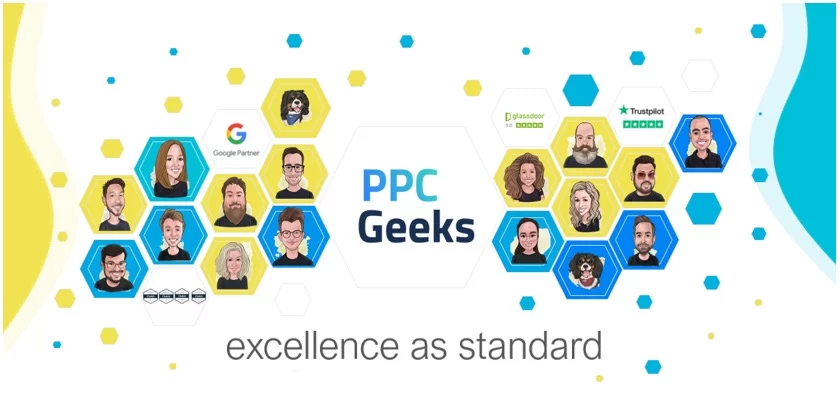How to Create a Successful Bespoke Google Shopping Campaign
When set up by an experienced Google Shopping Agency, a Google Shopping campaign is a great way to convert more sales through paid advertising. Indeed, there’s no denying that a proper Google Shopping campaign can take time to master,...

When set up by an experienced Google Shopping Agency, a Google Shopping campaign is a great way to convert more sales through paid advertising.
Indeed, there’s no denying that a proper Google Shopping campaign can take time to master, but after an expert, Google Ads specialist gets to grips with what you want to achieve, then you’ve certainly got a chance to realize your most desirable objectives.
Google Shopping is a comparison shopping search engine, which is a service that helps retailers to advertise their products to consumers in an enticing and appealing way.
So, whether you work for a Google Ads company or a PPC agency, here’s a comprehensive guide on everything you need to know about how to set up a Google Shopping campaign.
Firstly, what is Google Shopping? Google Shopping is a bespoke shopping search engine, whose sole purpose is to help retailers advertise their products to users who are looking for an easy way to shop online.
This means if someone searches for a product that you sell, Google will serve up relevant shopping ads across their network. Each ad includes an image, the product title, price, and the name of the retailer, and, if the user clicks on your ads, Google will take them straight to your landing page or the product page.
Without a doubt, Google Shopping is by far one of the most popular shopping search engines in the world.
How to Set Up a Google Shopping Campaign?
Your first step to start advertising on Google Shopping, whether you’re a PPC expert or a seasoned Google Ads consultant, is to transform your tangible products into online ads.
Building a bespoke Google Shopping campaign consists of four elements:
ProductsProduct FeedGoogle Merchant Centre AccountGoogle Ads AccountThese four elements are all connected and help your Google Shopping Ads to function efficiently and effectively. So, now that you’ve decided what ads you want to build your Google Shopping campaign around, the next step is to create your product feed.
Creating Your product Feed
Your Google Shopping product feed is the life center of your campaign, containing everything from integral data to important product data. In essence, think of your product feed as a big spreadsheet that contains everything you need for your ads to succeed.
Google is very particular about what you can include in your ads and in what format you can process this information, meaning it is easy to get wrong when creating an ad for the first time.
What then happens, Google will either not approve your products or, most likely, give you the opportunity to fix the problem by adjusting your product data.
Consequently, whilst you can input your data manually with the help of a Google Ads expert, there is also a myriad of apps and extension tools to help you generate your product feed:
Shopify – Shopify works in tandem perfectly with Google Shopping. In fact, Shopify can automatically sync your products to your product feed and help create campaigns using the Google channel.WooCommerce – WooCommerce is one of the most complete plugins on the market. From pre-defined templates to advanced field mapping and more, this tool provides high-quality product feed support for Google Shopping.Magento – With Magento, you can upload all your product data to Google Shopping, helping to create a pre-configured platform in which to manage all your campaigns effectively and efficiently.
Indeed, while it’s important to get this step right, Google, in fact, automates a large share of the work as it wants you to advertise your products using its channel.
Setting Up Google Merchant Centre
Once your feed is set up and ready to go, you can then create a Google Merchant Centre account. Firstly, you need to upload your product data feed to the merchant center, after which, head over to ‘Diagnostics’ to see if you need to correct any errors.
This is important because neglecting these simple fixes could result in the complete suspension of your account further down the line.
When setting up your Google Merchant Centre, now is the time to configure your shipping settings and tax details. Google needs to know your shipping costs and tax deductions to make an accurate comparison with other vendors so as to serve your ads up in the best marketplace possible.
In addition, you can also set up a number of unique tax rates depending on where you’re selling to.
With this now complete, you can progress to the next step: creating your Google Shopping campaign.
Creating a Google Ads campaign
Once Google has approved your products, then the next step is to create a Google Shopping campaign as part of a wider Google Ads campaign.
In your Google Ads dashboard, you can create a new shopping campaign using the data you previously uploaded to the merchant center. After choosing ‘Shopping’ as your campaign type, you can decide to set up either a ‘Standard’ or a ‘Smart’ campaign.
Firstly, a ‘Standard’ campaign will give you more control over your PPC management exploits, while choosing a ‘Smart’ campaign will result in more exposure for your ads.
After you’ve finished building and selecting your campaign type, the final step is to only adjust your settings.
To conclude the setup process, Google requires you to give your campaign a name as well as a budget, bid strategy, and location where you want to serve your ads.
And that’s. Press save, and your Google Shopping campaign is complete and ready to go.
PPC Geeks: Google Ads Specialists
And that’s it: that’s how you set up a bespoke Google Shopping campaign. It’s always useful to refresh your knowledge and make sure you understand the intricacies and importance of setting up a Google Shopping campaign in the right way.
As an established Google Premier Partner, PPC Geeks pride themselves on building the best shopping campaigns possible.
That said, if you require any help with this or want to improve your Google Ads campaigns in general, then why not invest in one of their free Google Ads audits?

 Kass
Kass 










![How to Create an Editorial Calendar [Examples + Templates]](https://blog.hubspot.com/hubfs/marketing%20team%20in%20need%20of%20editorial%20calendar%20template%20to%20simplify%20content%20planning.jpg#keepProtocol)




















